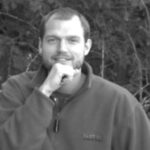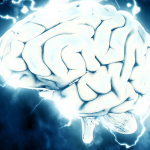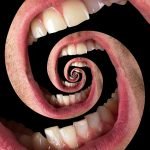The Practitioner’s Mind and the Healing Process
Adam Prinsen, ND
This article will focus on the doctor/patient relationship and how the state of the practitioner’s mind influences the healing process.
What is an Illness?
Most physicians would agree that illness is an expression of imbalance in the human body or mind. What I have come to realize through my personal experience as well as that of treating patients is that most chronic illness has roots in the more subtle parts of a human being … mental/emotional/spiritual. These are labels for things that are difficult to categorize. Basically, we are talking about a whole person, their life and their whole state of being. How are they adapting to situations? When do they feel stress and why? How does this affect their habits, desires, aversions, relationships, work, etc.? Looking at this can be called mind/body medicine or holistic medicine. Our goal as NDs is to catalyze a change in the whole person, which requires us to keep developing ourselves and our medicine.
When we look at the whole person, we can begin to see how they are not separate from their “illness.” They are expressing themselves through illness. They are speaking a subconscious language and asking for help from you in this way.
To really heal, a person with a chronic illness needs to come out of a way of living, believing, perceiving and reacting. This person needs to find a new way of being that is free from their old ways of thinking, feeling, reacting and choosing. The “illness” that they want you to rid them of is actually a gift that motivates them to find help and change. Illness is an inherent part of evolution and nature. Illness must be respected if it is to be overcome. Its message must be heard so we can understand its purpose in our lives. Hearing this message with clarity is the first step in the healing process of those who are sick. For those who wish to continue to live a healthy life, listening must be developed so that one may remain healthy.
How Do We Listen and Hear?
Listening is a very subtle art that the Chinese loosely associate with the water element. The water element is also associated with stillness. The image of water often has been used to describe the state of the mind. For example, one’s mind could be like that of a still pond, or that of the ocean in gale-force winds. When the water is calm and clear, it acts like a mirror and we can see the truth about ourselves. We can also see what lies beneath the surface. When the water is more turbulent we can only see a distorted image in it, and we cannot see the bottom of the pond. Therefore, a turbulent mind does not facilitate a clear perception of the truth.
To be able to listen to deeper currents and be able to see with greater clarity, we must learn to still and quiet the business in our minds. This will give us the most powerful instrument for our assessment as NDs – more powerful than any machine because the calm mind is grounded in the heart, and the heart is where one can know the truth directly/experientially.
How Do We Still the Currents of the Mind?
Concentration is one great key to having a still mind. Everyone knows what this is and everyone can do it to some degree. The great thing is that like a muscle, concentration is a mental faculty that can be strengthened and conditioned to become more powerful. This means that wherever our listening skills and ability to perceive are right now, we can improve. We can become more still and sensitive to what is happening around us. We can sharpen our most valuable instrument for perceiving. And the best method for us as NDs is to concentrate on our sense organs. The sensory organs of smell, sight, hearing, touch and even taste are our great allies in perceiving the nature of illness. Homeopaths, Ayurvedic physicians, Chinese medical practitioners and even allopathic medical practitioners all say the same thing: If you listen well enough, your patient will tell you the nature of their illness. This listening is done with more than the ears. It is a whole-body phenomenon.
Mental concentration can be practiced in many ways and at many times throughout the day. When we are eating a meal, for example, we can practice tasting the food fully: Concentrate your attention on your taste buds and mouth as you chew the food. Notice the details of what you are experiencing. (Notice how this sharpens your mind.)
As you read this article, allow yourself to slow down. Allow yourself to really read these words and let them sink in. Notice if you are just skimming the page so you can get through the article quicker. This way of reading will probably speed up your mind and leave you less connected to your senses. When you really listen to what is being said here, you will be slowing down to taste the truth of it … to savor it and let it sink in. The truth is not in the words, but in your experience of the words. To really have the experience, you have to slow down and come into your senses.
This way of being and doing will slowly retrain our minds to be centered in the present moment. This presence of mind sharpens our perception. It allows us to experience what is really happening within us and around us. And this is what we need when we are with patients.
If you bring this mindfulness to your naturopathic practice, you will probably start to notice a shift in the way things unfold in sessions with patients. You will be more attuned to them and what you experience within yourself while being with them. This helps you pick up on the important subtleties that tip you off to things that need to be explored further. For example, when they are hiding something or avoiding something due to discomfort, you will be more likely to notice it and tune into what is going on with them. It helps you hear what they are really saying underneath the words, and to determine what they really need.
What Do We Need to Do?
Some of you may be thinking, “Well, that sounds great, but what do I do with this information?” That is a great question, and for each practitioner the answer will be different, depending on what modalities one works with. On the other hand, there is nothing you need to “do,” necessarily. We often feel we need to do something, but there is incredible value to patients when you simply listen to them and provide a still space for them to be heard.
This space of stillness seems to act like a vacuum. It draws out deeply held fears, anger, worries, joy, grief. It draws out the truth. It provides an opportunity for these things to be uncovered in a place of safety and respect. When one travels into this space with another person witnessing them, it can be very transformational. In a manner of speaking, the practitioner’s calm mind acts like a vacuum and a mirror that reflects the truth back to the patient. Seeing the truth brings awareness to the whole life situation. This awareness is what can often lead to self-motivated changes on behalf of the patient. Self-motivated! That means you are not the “do-er.” By “doing” less and “being” more, you find that something greater is happening than you could ever plan or control.
So, can we facilitate the healing of our patients by influencing our own inner state? Definitely. To grow as a holistic physician, one must do work that leads to inner stillness and openheartedness. As we become more clear and still within ourselves, we provide a deep and still container to hold our patients and their stories. Our heart makes this “container,” and its warmth provides an opportunity for connection and for recognition of the truth. As we heal ourselves, we heal our patients. If we stop growing, we limit our potential as a catalyst for healing.
May the peace in our hearts hold and reflect the truth for our patients.
May this peace reach the world through our practices.
May we heal together and with our patients.
Case Study
I’m sure many of you have examples of this phenomenon of patient awareness bringing self-motivated changes. I would like to share one example that recently occurred in my practice.
A widowed 56-year-old female came to see me with a diagnosis of polymyalgia rheumatica. She had a fair bit of pain and inflammation in her body. As I sat and listened, I noticed the tendency of my mind to start thinking of remedies and treatments that may be of use for such a condition. I put all that aside, knowing that these are what my mind clings to for security when facing the unknown terrain of the truth. I want to get at the truth of what is driving this illness, so I commit to facing the truth with my patient.
She continued to talk about her life and revealed her story of controlling partners in relationships, griefs that happened to coincide with the onset of her illness; and after talking for a while she began to get more comfortable with me. At one point she decided to tell me something that “she hadn’t planned on telling me” … that she was having an affair with a married man. She obviously had some shame about this, but I could also see that she was very relieved to be able to talk about it with someone. It had been taking a lot of her energy to hold it inside. At any rate, the visit ended, and we scheduled a follow-up visit for one month later.
The first thing she told me at the second appointment was that she had decided to end the affair, as it was not helping her stress level. She hates to be alone and needs company. Since her husband passed away she had been very lonely, but was afraid to be in a committed relationship for fear of being controlled like she was in the past. All of these insights were new to her.
The truth was coming out and she began making changes accordingly. She was ready to change; all she needed was someone to listen with a calm mind so that she could see to the bottom of her own mind and heart. When she saw what was there, she began to make some improvements.
She has a long journey ahead, but she knows that her “polymyalgia rheumatica” is connected to the rest of her life (not separate), and she is willing to begin healing her life. This was a bit of a shock to me, as I had not mentioned this concept to her, and on the previous visit I had the feeling that she wasn’t really open to this holistic way of thinking. At any rate, she is changing mysteriously, simply by having the space to explore her own heart and mind.
 Adam Prinsen, ND graduated from CCNM in 2003. He presently practices in Peterborough, Ontario. He has completed the clinical training in mind/body medicine at Harvard University and the Spiritual Lifestyle Program at the Kripalu Center for Yoga and Health. His deep interests lie in connecting with the natural world, homeopathy, plant energetics and meditation, and inspiring people to expand their perception of life. He has a passion for teaching and presently offers courses on mind/body medicine, whole person detoxification (body, mind, spirit), Ayurvedic medicine and naturopathic nutrition. His favorite pastime is canoeing in northern Ontario.
Adam Prinsen, ND graduated from CCNM in 2003. He presently practices in Peterborough, Ontario. He has completed the clinical training in mind/body medicine at Harvard University and the Spiritual Lifestyle Program at the Kripalu Center for Yoga and Health. His deep interests lie in connecting with the natural world, homeopathy, plant energetics and meditation, and inspiring people to expand their perception of life. He has a passion for teaching and presently offers courses on mind/body medicine, whole person detoxification (body, mind, spirit), Ayurvedic medicine and naturopathic nutrition. His favorite pastime is canoeing in northern Ontario.










